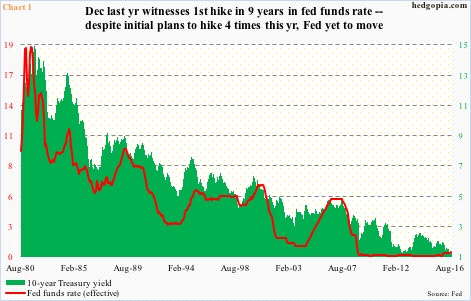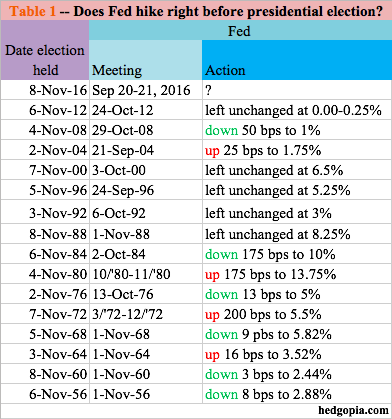Three prominent FOMC members spoke in the past week, and all three adopted a hawkish tone.
Might they be trying to ready the markets for a rate hike in the September 20-21 meeting? With the U.S. presidential election scheduled for November 8th, is a rate hike even possible in the upcoming meeting no matter how hawkish the message?
On Sunday, sounding upbeat on prospects for the U.S. economy in coming quarters, Stanley Fischer, Fed vice-chair, suggested that a rake hike this year was still possible.
Last Friday, John Williams, San Francisco Fed president, said the U.S. economy was strong enough to warrant an increase in rates soon. One day earlier, William Dudley, New York Fed president, highlighted the improving job market.
Of the three, Mr. Williams is a non-voting member. Mr. Dudley is a permanent voting member. As is obviously Mr. Fischer. All three are considered part of Janet Yellen’s, Fed chair, inner circle. (Back when Ms. Yellen led the San Francisco Fed, Mr. Williams headed up the bank’s research department.)
Their remarks come just a few days prior to Ms. Yellen’s Jackson Hall speech this Friday. Rather than guess if she would lean dovish or hawkish, here is a scenario.
The last time the Fed hiked was last December. This was the first hike in nine years (Chart 1). The fed funds rate was pushed up to a range of 0.25 to 0.50 percent – still zero-bound.
Initially, the Fed planned to hike four times this year. It is yet to make a move. Mr. Dudley was right to point out the improving job market. After May’s anemic 24,000 non-farm jobs, June and July added 292,000 and 255,000 jobs, respectively. If August is another strong month, listening to Mr. Fischer and Mr. Dudley last week, the Fed would need some really good excuse not to move in September.
There is a school of thought that with the presidential election seven weeks away, the Fed would probably want to wait, and that rules September out. What does history say? Is it customary for the Fed not to move right before the election?
In fact, as Table 1 shows, of the prior 15 presidential elections, the Fed cut rates six times, left them unchanged five times, and raised them at least twice and possibly four times.
Most recently, in 2004, in the June 30th meeting the Fed hiked by 25 basis points to 1.25 percent, then kept hiking. The election was on November 2nd that year, with the Fed hiking both before and after. On September 21st, the rate was pushed up by 25 bps to 1.75 percent.
In 1980, in late July the fed funds rate stood at 9.5 percent, rising to 12 percent in the next couple of months. Then it kept rising. The election was held on November 4th that year. The fed funds rate stood at 15 percent on the 7th that month. Prior to that, it was increased to 13.75 percent between October and November. It is not clear if the Fed hiked on the 3rd of that month, or waited until the 4th or 5th. But the trend was clearly up going into the election. The Paul Volcker Fed was aggressively hiking. By December 5th, rates were at 20 percent.
Similarly, between March and December 1972, rates were tightened by 200 basis points to 5.5 percent. It is hard to tell if rates were raised immediately before the election, which was held on November 7th. But once again, rates continued to rise post-election.
The point in all this is this. In the past, the Fed has both raised and lowered rates immediately before the presidential election. Making a move this September should not be an issue, should it so desire. Markets are not buying it, though. Not one iota.
Thanks for reading!


